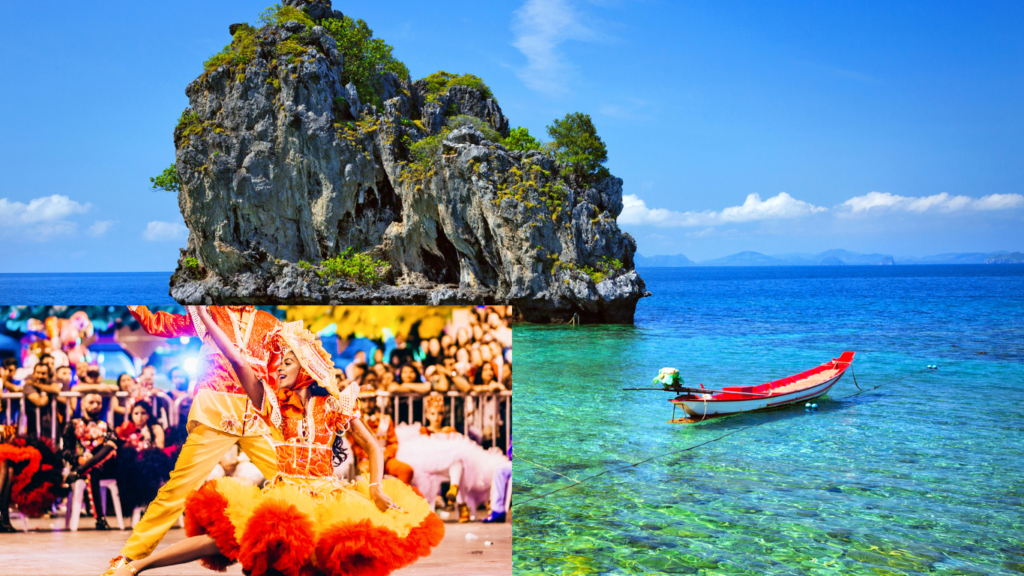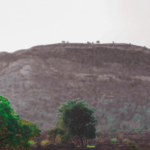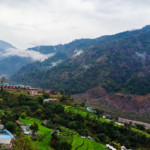Imagine a tropical paradise where pristine beaches meet vibrant cultural celebrations, where the rhythm of traditional drums blends with the crash of ocean waves. Welcome to the Andaman and Nicobar Islands, a Union Territory of India that’s not just a haven for nature lovers but also a melting pot of diverse cultures and festivals. In this comprehensive guide, we’ll dive into the heart of Andaman and Nicobar festivals, exploring their rich heritage, unique traditions, and practical tips for experiencing them firsthand. Crafted with a sensational yet educational tone, this well-researched blog post is your ultimate resource for discovering the cultural tapestry of these islands. Let’s embark on a festive journey that will leave you inspired and ready to plan your trip!
What Are Andaman and Nicobar Festivals? A Cultural Mosaic
The Andaman and Nicobar Islands, nestled in the Bay of Bengal, are home to a vibrant blend of indigenous tribes, settlers from mainland India, and diverse religious communities. This multicultural fabric is vividly showcased through the islands’ festivals, which range from religious celebrations like Diwali and Durga Puja to cultural extravaganzas like the Island Tourism Festival. These events are more than just celebrations; they’re a window into the islands’ history, unity, and communal harmony, attracting travelers seeking authentic cultural experiences. From the rhythmic dances of the Great Andamanese to the colorful processions of Panguni Uthiram, Andaman and Nicobar festivals offer something for everyone, making them a must-see for tourists and locals alike.
The islands’ festivals are deeply rooted in their diverse population, which includes Bengalis, Tamils, Telugus, Nicobarese, and indigenous tribes like the Jarawa, Onge, and Sentinelese. This diversity ensures a year-round calendar of events, each infused with the islands’ unique tropical charm. Whether you’re drawn to spiritual rituals, beachside festivities, or cultural performances, the Andaman and Nicobar festivals promise an unforgettable experience that celebrates “Mini India” in all its glory.
Why Andaman and Nicobar Festivals Are a Must-Experience in 2025
In 2025, the Andaman and Nicobar Islands are poised to shine as a top travel destination, with their festivals playing a starring role. These celebrations offer a chance to immerse yourself in the islands’ cultural heritage while enjoying their natural beauty. The peak tourist season from October to March aligns perfectly with major festivals like the Island Tourism Festival and Pongal, making it an ideal time to visit. According to tourism data, the islands welcomed over 500,000 visitors in 2024, many drawn by the allure of these vibrant events. Posts on X highlight the growing popularity of festivals like the Monsoon Music Festival, which combine local talent with tropical vibes. Whether you’re a culture enthusiast, adventure seeker, or family traveler, these festivals provide a unique blend of excitement and education, making them a bucket-list experience.
The Historical and Cultural Significance of Andaman and Nicobar Festivals
The festivals of the Andaman and Nicobar Islands are a testament to the region’s rich history and cultural evolution. Historically, the islands were home to indigenous tribes with distinct rituals tied to nature and community. With the arrival of settlers from mainland India in the 19th century, particularly after the establishment of the Cellular Jail in Port Blair, the islands became a melting pot of cultures. Bengalis, Tamils, and other communities brought their traditions, blending them with local customs to create a unique festive identity.
Festivals like Durga Puja and Pongal reflect the influence of mainland India, while events like the Great Andamanese Festival preserve indigenous heritage. The Island Tourism Festival, introduced in 1988 as Dweep Mahotsav, was designed to promote tourism and showcase this cultural diversity. Today, these festivals not only celebrate the islands’ multicultural spirit but also foster unity among communities, as Hindus, Muslims, Christians, and tribals come together to rejoice. This harmony, often described as a “historical gift,” makes the Andaman and Nicobar festivals a powerful symbol of India’s unity in diversity.
Top Andaman and Nicobar Festivals to Experience
Let’s explore the most iconic festivals that define the cultural landscape of the Andaman and Nicobar Islands, drawing inspiration from top-ranking sources like Swan Tours, Tusk Travel, and Barefoot at Havelock. Each festival is a vibrant celebration, offering unique insights into the islands’ heritage.
Island Tourism Festival (January)
The crown jewel of Andaman and Nicobar festivals, the Island Tourism Festival is a 10-15 day extravaganza held annually in Port Blair. Organized by the Andaman and Nicobar Administration, this event showcases the islands’ culture, art, and natural beauty. Expect a dazzling array of traditional dance performances, music concerts, handicraft exhibitions, and water sports competitions. Highlights include puppet shows, dog shows, and canoe races, with renowned artists from mainland India adding star power. Held at the ITF Ground in Port Blair, with smaller events across islands like Havelock and Neil, this festival is a must-visit for its vibrant atmosphere and cultural immersion. In 2024, the festival was briefly canceled due to administrative reasons, but it’s set to return in January 2025 with even more grandeur.
Beach Festival (April)
Celebrating the islands’ sun, sand, and sea, the Beach Festival is a springtime highlight held in April on beaches like Corbyn’s Cove and Havelock. Organized by the Tourism Department, this event promotes beach activities through volleyball tournaments, sandcastle competitions, and water sports like parasailing. Cultural performances, food stalls serving local delicacies, and live music create a festive vibe. The festival’s aim is to showcase the islands’ coastal charm, making it perfect for adventure seekers and families. Its relaxed summer setting, with temperatures around 25-30°C, ensures a memorable experience.
Monsoon Music Festival (June/July)
Embracing the tropical rains, the Monsoon Music Festival in Port Blair is a celebration of music and art during the monsoon season. This event features performances by local and mainland artists, spanning classical, folk, and contemporary genres. Food stalls offer island cuisine, while dance performances add to the festive spirit. Held in venues like the DBRAIT Auditorium, the festival highlights the islands’ creative talent and is a great way to experience Andaman’s cultural vibrancy during the quieter monsoon months.
Subhash Mela (January 23)
Commemorating the birth anniversary of Netaji Subhash Chandra Bose, Subhash Mela is a week-long festival held in Port Blair. Centered around the Cellular Jail, where a statue of Netaji stands, this event features patriotic speeches, cultural programs, and exhibitions honoring his role in India’s freedom struggle. Sports events and parades add to the festivities, making it a significant occasion for locals and history enthusiasts. The festival’s historical context and community spirit make it a poignant addition to any Andaman itinerary.
Durga Puja (September/October)
A grand celebration among the Bengali community, Durga Puja is one of the most vibrant festivals in the Andaman and Nicobar Islands. Marking the victory of Goddess Durga over the demon Mahishasura, this five-day festival features elaborate pandals, intricately crafted idols, and cultural performances. In Port Blair, Diglipur, and Rangat, devotees gather for rituals, aartis, and processions, culminating in the immersion of idols in the sea. Visitors can enjoy traditional sweets like rasgulla and witness the islands’ Bengali heritage in full splendor.
Pongal (January)
Celebrated by the Tamil community, Pongal is a harvest festival dedicated to the Sun God, giving thanks for a bountiful crop. Held in mid-January, this four-day event involves cooking the traditional dish “Pongal” from freshly harvested rice, milk, and jaggery. Homes are adorned with kolams (rangoli), and families exchange gifts and visit temples. In areas like Port Blair and Neil Island, Pongal is a vibrant display of Tamil culture, with music, dance, and community feasts. Its timing aligns with the Island Tourism Festival, making January a festive hotspot.
Diwali (October/November)
The Festival of Lights, Diwali, illuminates the Andaman and Nicobar Islands with diyas, rangolis, and fireworks. Celebrated by the Hindu community, this festival symbolizes the triumph of good over evil. Homes and streets glow with lights, and locals share sweets like laddoos and barfis. In Port Blair, community events and cultural performances enhance the festive mood. Diwali’s universal appeal makes it a great time for visitors to experience the islands’ warmth and hospitality.
Holi (March)
Known as the Festival of Colors, Holi transforms the islands into a riot of vibrant hues. Held at Corbyn’s Cove Beach since 2016, this Tourism Department-organized event features colored powders, water fights, and live music by local artists. The festival promotes peace and brotherhood, drawing locals and tourists alike. Its beachside setting adds a unique tropical twist, making Holi in Andaman a must-experience for fun-seekers.
Panguni Uthiram (March/April)
A significant festival for the Tamil community, Panguni Uthiram honors Lord Murugan with grand processions and rituals. Devotees carry kavadis (decorated burdens) and participate in body-piercing acts of devotion, accompanied by music and dance. In Port Blair, the procession of Lord Murugan’s idol through the streets is a cultural spectacle. This festival offers a deep dive into Tamil traditions and is a unique experience for cultural explorers.
Christmas (December)
Christmas brings festive cheer to the islands, particularly in Port Blair and Havelock, where the Christian community decorates churches and homes with lights and nativity scenes. Midnight Mass, carol singing, and community feasts create a joyous atmosphere. The islands’ serene beaches and tropical ambiance make Christmas a magical time to visit, with celebrations uniting people of all faiths.
Eid-ul-Fitr (Varies)
Marking the end of Ramadan, Eid-ul-Fitr is celebrated with enthusiasm by the Muslim community. Special prayers at mosques, community feasts, and the exchange of sweets like sheer khurma highlight the festivities. In Port Blair, Eid fosters cultural harmony, with non-Muslims joining in the celebrations. The festival’s inclusive spirit makes it a heartwarming experience for visitors.
Janmashtami (August/September)
Celebrating the birth of Lord Krishna, Janmashtami is a major festival in the islands. Devotees fast until midnight, sing bhajans, and perform Raas Leela plays reenacting Krishna’s life. Temples in Port Blair, like the Sri Radha Krishna Temple, are adorned with flowers and lights. The festival’s spiritual and cultural richness makes it a captivating event for visitors.
Indigenous Tribal Festivals
The Great Andamanese, Onge, and Nicobarese tribes celebrate festivals tied to nature and community, such as the Great Andamanese Festival. These events feature traditional dances, folk songs, and feasts, preserving tribal heritage. While some celebrations are private, public events like the Leh Carnival on Little Andaman showcase the Shompen tribe’s culture. Visitors can engage with these festivals respectfully, gaining insights into the islands’ ancient traditions.
How to Experience Andaman and Nicobar Festivals: Practical Tips
To make the most of these festivals, plan your trip with these practical tips:
Best Time to Visit
The dry season (October to March) is ideal for festival-goers, aligning with major events like the Island Tourism Festival, Diwali, and Holi. The monsoon season (June to September) offers the Monsoon Music Festival but requires precautions due to rain. Check festival dates on the official Andaman Tourism website, as some, like Eid and Diwali, vary annually.
How to Reach the Islands
By Air: Veer Savarkar International Airport in Port Blair is the main gateway, with flights from Delhi, Mumbai, Chennai, and Kolkata (2-3 hours). Book early for festive season deals.
By Sea: Ships from Chennai, Kolkata, and Visakhapatnam take 3-4 days to reach Port Blair. Government ferries like MV Swaraj Dweep are budget-friendly but require advance booking.
Where to Stay
Port Blair offers a range of accommodations, from luxury resorts like Symphony Samudra Beachside Jungle Resort to budget guesthouses. Havelock and Neil Island have options like Barefoot at Havelock for a beachside stay. Book 2-3 months in advance during festival season to secure deals.
Festival Etiquette
Respect local customs, especially during religious festivals. Dress modestly for temple visits and ask permission before photographing rituals.
Follow guidelines for tribal festivals, as some are private. Engage with guides from Andaman World Travels for cultural insights.
Participate enthusiastically but respectfully in events like Holi, ensuring you use eco-friendly colors.
What to Pack
Lightweight clothing for tropical weather, plus a raincoat for monsoon festivals.
Comfortable shoes for walking during processions or beach events.
A camera or smartphone for capturing vibrant moments, with extra batteries.
Cash for food stalls and handicraft purchases, as some vendors may not accept cards.
Festival Calendar for 2025
Festival | Month | Location | Highlights |
|---|---|---|---|
Island Tourism Festival | January | Port Blair, Islands | Cultural shows, water sports, exhibitions |
Subhash Mela | January 23 | Port Blair | Patriotic events, Cellular Jail programs |
Pongal | January | Port Blair, Neil | Harvest rituals, kolams, Tamil cuisine |
Holi | March | Corbyn’s Cove | Color fights, live music, beach festivities |
Panguni Uthiram | March/April | Port Blair | Lord Murugan procession, Tamil rituals |
Beach Festival | April | Havelock, Corbyn’s | Beach games, water sports, cultural shows |
Monsoon Music Festival | June/July | Port Blair | Music performances, local cuisine |
Janmashtami | August/September | Port Blair | Raas Leela, bhajans, temple rituals |
Durga Puja | September/October | Port Blair, Diglipur | Pandal decorations, idol immersion |
Diwali | October/November | Across Islands | Diyas, fireworks, community events |
Christmas | December | Port Blair, Havelock | Midnight Mass, carols, festive decorations |
Eid-ul-Fitr | Varies | Port Blair | Prayers, feasts, community celebrations |
FAQs About Andaman and Nicobar Festivals
What are the main Andaman and Nicobar festivals?
Key festivals include the Island Tourism Festival, Durga Puja, Pongal, Diwali, Holi, and Subhash Mela, showcasing the islands’ cultural diversity.
When is the best time to visit for festivals?
October to March is ideal, aligning with major events like the Island Tourism Festival and Pongal. June/July offers the Monsoon Music Festival.
Can tourists participate in Andaman festivals?
Yes, tourists are welcomed to join most festivals, especially cultural events like the Island Tourism Festival and Holi. Respect local customs during religious celebrations.
How can I find festival dates for 2025?
Check the Andaman Tourism website (www.andamantourism.gov.in) or contact tour operators like Andaman World Travels for updated schedules.
Are there festivals unique to the Andaman tribes?
Yes, festivals like the Great Andamanese Festival and Leh Carnival celebrate indigenous heritage, featuring traditional dances and feasts.
Conclusion: Celebrate the Spirit of Andaman and Nicobar Festivals
The Andaman and Nicobar Islands are a cultural kaleidoscope, where festivals weave together the threads of tradition, diversity, and tropical charm. From the grandeur of the Island Tourism Festival to the spiritual fervor of Durga Puja, these celebrations offer a chance to connect with the islands’ soul. Whether you’re dancing in the rain at the Monsoon Music Festival or marveling at Diwali’s lights, each event promises memories that last a lifetime. Plan your 2025 trip around these vibrant festivals, immerse yourself in the islands’ heritage, and share this guide with fellow travelers.



